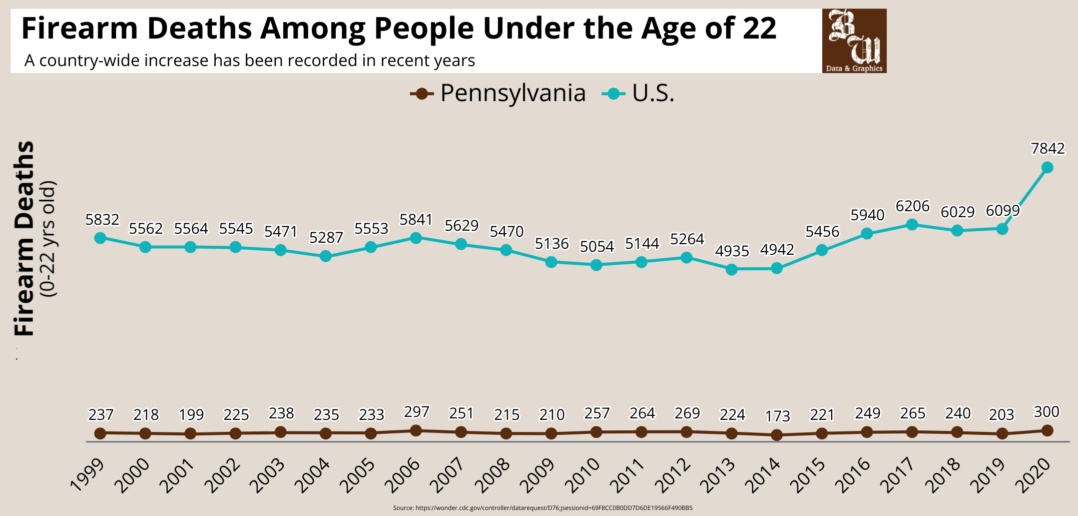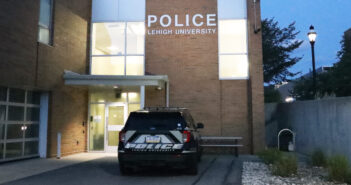Emotions and fears are heightened across the country following the mass shooting at Michigan State University.
Three students were killed and five others were seriously injured on Feb. 13. The shooting has prompted questions surrounding safety protocols and threat mitigation measures on college and university campuses including Lehigh.
“We cannot accept (that this) reality is reasonable,” political science professor Brian Fife said. “People who go to school…should not fear for their life because of gun violence.”
This fear stems from past instances of gun violence and can be attributed to the prevalence of gun ownership in America.
According to the Centers for Disease Control and Prevention, 45,222 people died from gun-related injuries in the United States in 2022, and according to Everytown Research & Policy, there were over 549 incidents of gunfire on school grounds from 2013 to 2019.
“As the father of two teenagers, one of whom is rapidly getting to that age to go off to college, I have the same thoughts and concerns as everyone else does,” said Jason Schiffer, Lehigh University Police chief.
He said concerned parents and students should look at what emergency responses campuses have in place.
Lehigh administration and LUPD have discussed access to university buildings over the years, and Schiffer said Lehigh is more secure than it used to be. However, they struggle to find balance between the needs for accessibility and security.
In response to a threat made by Muhammad Diop to Lehigh in fall 2022, Fife said building access should be confined so people do not have access to buildings where they “have no business being there.”
Schiffer said the process of giving visitors access to buildings varies depending on the reason and duration of their visit. Given Lehigh’s electronic card system, he said giving and taking away access is easy.
“We can grant access very specifically and then remove that access when somebody leaves,” Schiffer said. “You don’t have to worry about someone losing keys.”
He said anyone who gains access to Lehigh’s campus has to go through a background check completed by LUPD, whether it is a new employee, a contractor or a long-term visitor coming to campus.
In terms of responding to active threats, Schiffer said LUPD has discussed internally what the correct response is and how quickly to act. Determining whether or not to lock down campus depends on what information they have at a given moment.
There is a button in the LUPD security office that locks down all three Lehigh campuses and another button that activates the emergency sirens on all three campuses.
“If an active threat comes to our community, there’s going to be a lot going on,” Schiffer said. “We want to make sure that we can activate those systems as quickly and reliably as possible if we do need them.”
Schiffer said he feels Lehigh is well prepared, well equipped and well trained. He said the department trains to respond to active threats based on the latest and best practices.
But, he said there is always room for improvement, and emergency services and administration at Lehigh are continuously working to expand their knowledge on how to best prepare should threats like these arise.
“The moment you think you’re fully prepared, you’re making a big mistake,” Schiffer said. “We should always be thinking, ‘What can we do better?’”
Schiffer said LUPD and Bethlehem emergency services have been working with Louisiana State University’s National Center for Biomedical Research and Training.
According to the program’s website, Louisiana State University’s Academy of Counter-Terrorist Education is a nationally recognized center for emergency preparedness and response training. It provides mobile training to both the national and international emergency response community.
Schiffer said the academy came to campus for a week-long training program that brought Lehigh and Bethlehem police, Lehigh and Bethlehem emergency medical services and Bethlehem firefighters together to understand how to respond in an active threat situation.
He said while law enforcement must work to deal with an active threat immediately, they must also prioritize saving lives by providing medical attention.
“Some of the lessons that have been learned (from) the tragedies that continue to occur in our country are that we need to get medical attention to people who are injured as quickly as possible,” Schiffer said. “Many people are killed in these instances that had survivable injuries, had they gotten medical attention much sooner.”
This new focus has changed the equipment police carry, as LUPD officers are now equipped with tourniquets, trauma kits and other emergency medical equipment, in addition to the gear they need for an active threat.
Though in-person training was limited during the pandemic, Schiffer said LUPD will be bringing back what he calls an intense week-long immersive training session later in 2023.
The training is held on Mountaintop Campus and includes classroom, hands-on and scenario-based learning.
He said, during the training, they employed actors, gave them simulated wounds and used real firearms — that shot fake pellets — to give trainees as realistic a scenario as possible.
“To me, it was probably some of the best training that I’ve ever attended,” Schiffer said. “I’ve been in this field for over 29 years now, and it was really impactful.”
While administration and emergency response teams try to best equip themselves to deal with active threats, not all students know the protocols.
Gianne Sottile, ‘25, said her knowledge of how to avoid “getting caught” in an active shooter situation comes from high school.
“To say that I had learned it back before college is a sad thing,” Sottile said. “But that is the reality of the situation.”
Sottile said it’s important to have lockdown measures in place and informational sessions on how to evade an active shooter and what a realistic lockdown looks like.
Fife said, during his time at Lehigh, the university has always given a strong and transparent response when an act of violence occurs.
“We need to have a better plan in place nationwide rather than, ‘Our thoughts and prayers are with you’ — that’s not working,” Fife said. “It’s well intended, but people are hurting when there’s a mass shooting, and we need to do something tangible about it. Right now, we have not made that societal commitment, and it needs to change.”






Comment policy
Comments posted to The Brown and White website are reviewed by a moderator before being approved. Incendiary speech or harassing language, including comments targeted at individuals, may be deemed unacceptable and not published. Spam and other soliciting will also be declined.
The Brown and White also reserves the right to not publish entirely anonymous comments.